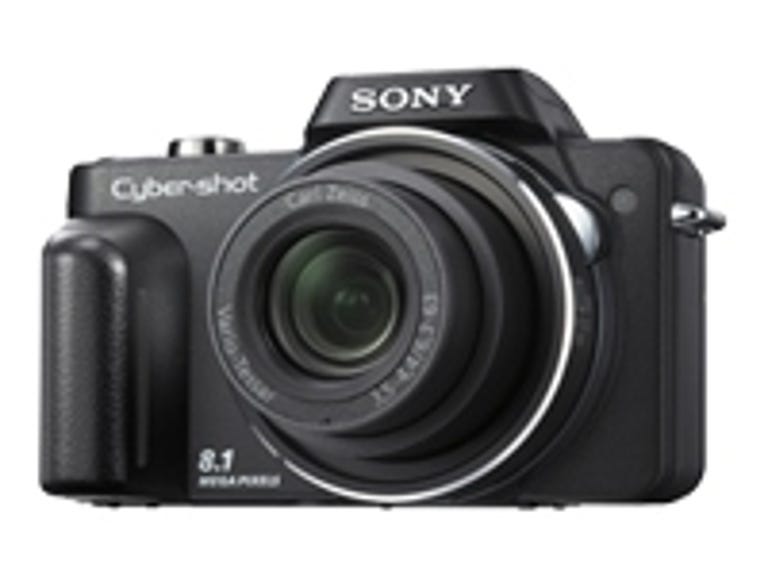 Why You Can Trust CNET
Why You Can Trust CNET Sony Cyber-shot DSC-H10 review: Sony Cyber-shot DSC-H10
Sony Cyber-shot DSC-H10
For the Cyber-shot DSC-H10 budget megazoom camera, Sony didn't change much from its predecessor, the Cyber-shot DSC-H3. Only its 230,000-pixel 3-inch LCD is new, compared with the 115,000-pixel, 2.5-inch version on the H3. Given the lack of an electronic viewfinder, that's a nontrivial enhancement, but pretty much the only one.
The Good
The Bad
The Bottom Line
At 10.3 ounces with battery and Memory Stick Duo Pro card, the H10 is one of the lighter megazooms, and as compact as any of them. Still, I found it relatively comfortable to hold and use.



With zoom ranges as long as 18x, it seems odd to refer to a 10x lens as a "megazoom," but the H10's f/3.5-4.4, 38-to-380mm-equivalent lens still seems a pretty big reach. The smaller range as well as the relatively narrow angle of view and absence of an electronic viewfinder tend to be what distinguishes the budget models from more expensive siblings such as the H9. The 8-megapixel sensor and hardware image stabilization--optical, in the case of the H10--are typical for its class. As with its predecessor, the H10 only provides a choice between two aperture values at any given focal length: f/3.5, f/4.0 or f/4.4, and f/8 or f/10, depending on where you are in the zoom range. It seems to be that the camera doesn't have a controllable aperture at all; according to the manual, it sounds like it just toggles a neutral density filter to decrease exposure: "When the zoom is set fully to the W side, you can select an aperture F3.5 or F8.0 (using the internal ND filter)." If that's true, then you can't control the depth of field at all. All in all, these make the camera's manual exposure mode a bit of a joke.
The H10 delivers above average, but not outstanding, performance, and comes in just a tad slower than the H3 in most respects. It wakes and shoots in a reasonable 1.7 seconds. Its shutter lag for high- and low-contrast scenes--0.5 second and 1.1 seconds, respectively--are typical for this class, as are its 1.7-second typical shot-to-shot time. It does post a gain with its solid 1.8-second flash shot-to-shot performance. Similarly, its two frames per second burst performance exceeds many of its competitors. The LCD is easy to see in direct sunlight--an essential characteristic, since the H10 lacks an alternate viewfinder.
Photo quality ranges from great to not so great. Shots I took outdoors, in good sunlight, looked very nice; sharp, with accurate yet saturated color and correct, even exposures. Indoor shots look murkier and softer, with significant noise and processing artifacts at ISO 800 and higher. Furthermore, the lens displays far more distortion that I'd like. The H10's movies look good (I only tested it outdoors), but the audio sounds too muffled, and the camera can't zoom--and didn't even seem to want to refocus--during movie capture.
A decent, but not outstanding option for those in search of a modestly priced megazoom, you might want to check out our list of Best megazoom digital cameras before committing to the Sony Cyber-shot DSC-H10.
(Smaller bars indicate better performance)
| Typical shot-to-shot time | Time to first shot | Shutter lag (dim) | Shutter lag (typical) |
(Longer bars indicate better performance)



